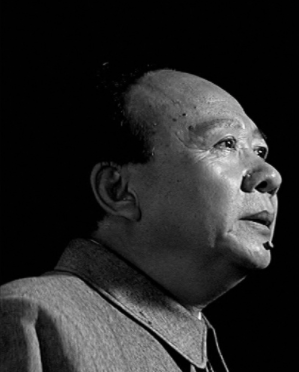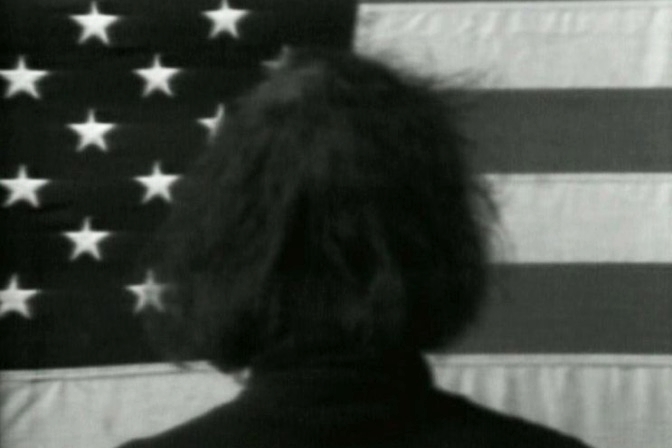Jiang Zhi (b.1971, Yuanjiang, China), and part of There is no ‘I’ in Team, a unique opportunity to see the work of an extraordinary and vibrant new generation of Chinese artists (mainland China, Hong Kong, Taiwan and Macau), working in moving image, sound and installation art, arguably the most prolific and strongest type of work being created in China at the time.
The group exhibition at The BALTIC Centre for Contemporary Art and across several off-site exhibition spaces. The works on show were chosen to activate and animate spaces, and the exhibition was filled with sound and moving images. There were four zones to visit and the art engaged with each of these distinct areas.
The exhibition marked the first major group exhibition of Chinese contemporary art in the North East of England. Its curators present, with international partners and in partnership with UK organisations an arresting presentation of current Chinese culture. The exhibition was conceptualized as a platform to introduce audiences to the burgeoning contemporary art scene of China. At a time when China’s global influence was ascending, the exhibition offered a rare glimpse into the diverse and complex narratives shaping Chinese society and its artistic expressions. The exhibition showcased the dynamism of Chinese contemporary art but also marked a significant moment in cultural exchange and artistic dialogue.
The choice of venues was as symbolic as it was practical, the exhibition resonated with the theme EAST.08 – both in the literal sense, given the the history, and metaphorically, representing China’s emerging power against the post-industrial backdrop of Newcastle, providing a stark, compelling contrast to the vibrant artworks, creating a dialogue between the old and the new, the East and the West. One of the most remarkable aspects of There is No ‘I’ in Team was its engagement with audiences. The exhibition was not just a display of art; it was an immersive experience.
Visitors were invited to explore the interplay of art and space, contemplate the narratives and themes presented, and engage in a cultural dialogue that transcended geographical boundaries. Bringing Chinese contemporary art to the forefront, highlighting its growing importance to the global art scene to new audiences. The exhibition’s success led to a broader recognition and appreciation of Chinese artists, many of whom have since gained international acclaim. Bridging cultures and opening dialogues. It was not only a celebration of Chinese contemporary art but also a testament to the power of art in connecting worlds and expanding horizons.
The exhibiting artists offered a speculative commentary on changes in China. Reflect on the substantial differences in individualist and collectivist cultural orientations and explore complex regional contexts and conditions, history, tradition and modernity derived from their personal experiences while critically reflecting on and simultaneously traversing their world of China now. Capturing a distinct vision of contemporary China whilst also reflecting on how artists’ lives and practices have developed and been informed by they’re rapidly changing social and cultural surroundings.
Widely regarded as one of the most versatile Chinese artists of his generation, Jiang Zhi works with a wide range of media, including photography, painting, video and installation as well as publishing volumes of fiction and poetry. Consistently engaging with contemporary social and cultural issues, Jiang consciously positions himself at the intersection of poetics and sociology, whilst weaving everyday social and personal experience into his works. His practice explores the problematic conditions of modern consciousness, looking to complex computer imagery for stimulation. His manipulated images which combine reality with hi-tech digital imagery represent and revisit our perceived present and the mental conceptions we bring to it. His photograph of the Chongqing House, known colloquially as the ‘House of Nails’, is representative of Jiang’s work, where a neon light floods a house which the owners refuse to leave, despite the demolition of their neighbourhood.
Jiang Zhi was born in 1971 in Yuanjiang, China. He graduated from the China Academy of Art in 1995 and lives and works in Beijing. He has had major solo retrospectives at Chinese institutions such as OCAT Shenzhen and the Times Museum in Guangzhou in addition to Sifang Art Museum, White Cube Hong Kong and Magician Space Beijing and has exhibited at international institutions and biennials including the Guggenheim Museum, New York, M+ Museum Hong Kong, the 9th Shanghai Biennale, Shanghai Power Station of Art, the 4th Guangzhou Triennial, Guangdong Art Museum, ICP and Asia Society New York, the 50th Biennale di Venezia, the 4th Gwangju Biennale. Jiang Zhi was awarded the Chinese Contemporary Art Award, the Academic Award for Reshaping History, and the Credit Suisse Today Art Award.
There is No ‘I’ in Team was curated by Keith Whittle, Keri Elmsly (UK), Pauline Doutreluingne (Germany), Jian Jiang (China), the exhibition includes work by artists exhibiting for the first time in the UK; Meiya Lin (CN); Jin Shan (CN); Dead J (CN) + Chen Xiongwei (CN); Peng Lei (CN); Huang Rui (CN); Cheng Ran (CN); Sheng Jie (CN); Meng Jin (CN); Song Tao (CN); Gao Yu (CN); Sun Xun (CN); Wu Junyong (CN); Joyn: Viscom (CN); Tsui Kuang Yu (TW); Chen Xiaoyun (CN); Gao Shiqiang (CN); Zhang Ding (CN); and Qiu Anxiong (CN). Three artists (Hung Keung, Sheng Jie and Meiya Lin) and curators were in Newcastle for the opening event and programme of artist talks.
Generously supported by Culture 10, The British Council China and presented in partnership with ISIS Arts in cooperation with Newcastle City Council. Part of CHINA NOW, the largest festival of Chinese culture ever in the UK, and EAST’08, a world-class celebration of contemporary Asian culture in Newcastle-Gateshead. The exhibition subsequently toured the Victoria and Albert Museum, South Kensington, London









